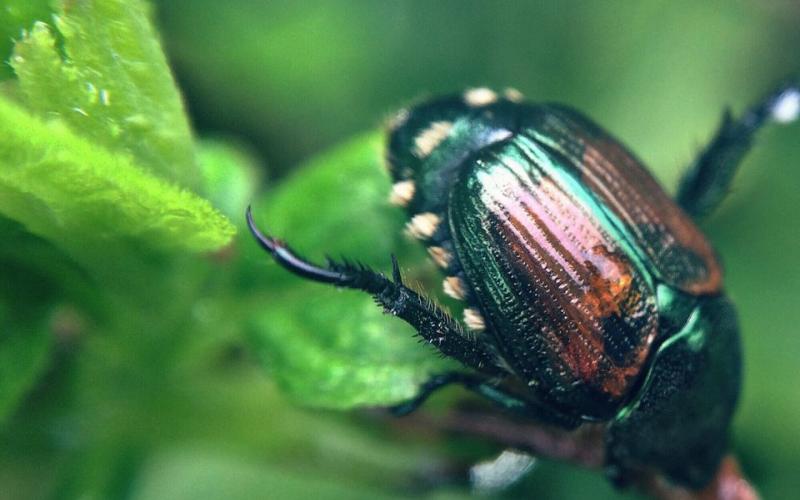By Thad Glenn
Stephens County Extension Service
It’s July and Japanese beetles are appearing on a number of plants. The damage adult beetles do in a short period of time can wreak havoc on flowers, shrubs and vegetables. Feeding on the upper surface of leaves, they eat the tissue between the veins, leaving a skeletonized appearance to the damaged leaves. Japanese beetles love certain plants with crape myrtles and roses being favorites.
As the name implies, Japanese beetles are not indigenous to North America. They were accidentally imported from Japan and first appeared in New Jersey in 1916. Despite efforts to contain them, they now infect about half the contiguous 48 states and continue to spread south and west at a rate of 5-10 miles per year. Unfortunately, they will probably be with us for the long haul.
The good news is that they can be effectively managed with minimal damage to your landscape. Adult beetles are generally less that one half inch long. They are metallic green with copper-brown wing covers. Beetles emerge from the ground in early June and feed on more than 300 different plants including herbaceous ornamentals, shrubs, vines, trees, small fruits, fruit trees, row crops, and even poison ivy. They generally live 30-45 days. During that time, females lay 40-60 eggs in the soil.
The grubs hatch after 8-14 days and spend 10 months underground, feeding on plant roots and organic matter. Their one-year life cycle comes full circle as the adults emerge the next June. Adult beetles usually feed in masses and tend to prefer plants in direct sun. Their presence attracts more beetles as they emit pheromones (odors) that attract other beetles to feed and mate.
If you catch them early and don’t have too many, hand picking is an effective control. Simply pick or shake off the beetles and drop them in a bucket of soapy water. This is easiest to do in the early morning when the beetles are less active. For larger infestations you will need to control the beetles with insecticides. Commonly sold homeowner insecticides containing the active ingredients of carbaryl, malathion, or imidacloprid are useful for controlling Japanese beetles.
During periods of heavy Japanese beetle activity, you will need to spray every 3-7 days. If you are applying insecticides to edible plants, it is important to observe the required waiting period between the last application and harvest. This is specified on the insecticide container label. Always wash edible plant parts before cooking or eating them as well.
Pheromone traps are not recommended for use in the landscape to control Japanese beetles. They do trap them, but in doing so they usually attract many more beetles to your yard and garden than would ordinarily be there. While Japanese Beetles feed on many species of plants, they definitely prefer particular species. Some that are particularly susceptible to damage include roses, grapes, Japanese maple, plum, apple, cherry, peach, crape myrtle, and rose of Sharon.
To minimize Japanese beetle damage in your yard in the future, consider planting a variety of plants that are not attractive to the pests. These include magnolia, redbud, dogwood, red maple, holly, boxwood, juniper, forsythia, clematis, and hydrangea. Unfortunately, Japanese beetles are here to stay for the long haul. However with persistent management you can keep your plants free of these summer pests.
(Thad Glenn is a county agent with the Stephens County Extension Service.)

